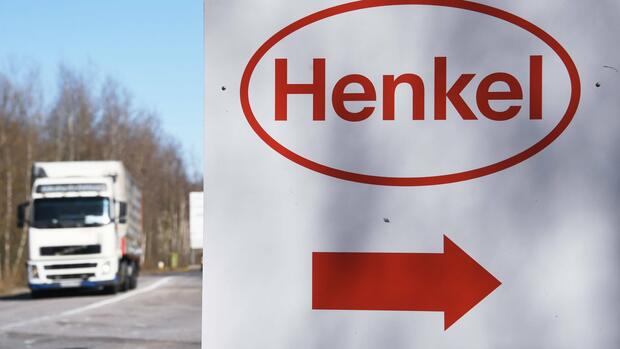The consumer goods group will probably leave Russia with financial losses.
(Photo: IMAGO/SNA)
Dusseldorf A year after the announced withdrawal, Henkel sold its Russian business. The Persil and Pril manufacturer announced on Thursday evening that a consortium of Russian financial investors had bought the activities. These include Augment Investments, Kismet Capital Group and Elbrus Services.
Augment Investments is owned by Russian billionaire Viktor Charitonin, who is, among other things, the main owner of the Nürburgring and is said to have recently considered the purchase of Hahn Airport. The oligarch is also the executive director of Russian drugmaker Pharmstandard. Charitonin is said to be close to the Russian government.
Kismet Capital, a Moscow-based private equity firm, invests in the technology, media and telecommunications sectors. The founder and boss is the prominent investor Ivan Tawrin.
Elbrus manages more than $1.5 billion through its funds focused on Russia and the countries of the former Soviet Union. “All buyers have established and long-standing business relationships in western countries and are not subject to any EU or US sanctions,” said Henkel.
With the sale of its Russian subsidiary, Henkel ended a tiresome chapter. On April 19, 2022, almost exactly a year ago to the day, the group only announced that it would withdraw from the country after great public pressure.
Before the Russian invasion of Ukraine, the consumer goods giant was invested more heavily than any other Dax company. The Düsseldorf-based company achieved five percent of its group turnover in Russia, over one billion euros, and employed 2,500 people in eleven plants.
Henkel leaves Russia with a financial loss
“Henkel expects the bottom line to be a financial loss as a result of the withdrawal from Russia,” a spokesman told Handelsblatt on Friday. The group achieved a sales price of around 600 million euros. This is well below the sales achieved, but above the book value of the Russian business shown in the balance sheet. Less liabilities, Henkel reports its Russian business at 526 million euros.
However, exchange rate effects also played a role in the implementation of the transaction, the spokesman explained. Henkel cannot yet quantify the amount of the loss, but details should be available when the half-year figures are presented in August. Further value adjustments may then be necessary. In the first half of 2022, the branded company had already written off 184 million euros on the Russian business.
Russia is making it increasingly difficult for Western companies to sell their assets. If companies from “unfriendly countries”, including Germany, want to leave Russia, a Russian appraiser assesses the value of the company. For the purchase price, 50, sometimes even 70 percent are deducted. In addition, companies must make a direct payment to the state when exiting.
Retreat took longer than expected
Henkel actually wanted to have stopped its activities in Russia by the end of 2022. Because that didn’t work, an exit in the first quarter was targeted. Many international buyers initially showed interest in the sales process, but in the end Russian investors remained.
According to a previously published speech, Henkel boss Carsten Knobel will say at the Annual General Meeting on Monday, “Another solution cannot be presented under the regulations that are now in force in Russia.”
Henkel had discontinued some activities, especially in the industrial adhesives business, because the group feared that industrial knowledge would be lost to competitors or that these products would be used for military activities. Henkel was active in Russia with its consumer goods and adhesives businesses.
Such transactions must be approved by Russian authorities. That happened, said Henkel. “The final closing is still pending.” It was reported from company circles that Henkel wanted to have a buyback option contractually guaranteed. Henkel set up its Russian business 30 years ago.
More: Eight graphics explain why Henkel is doing so badly.

